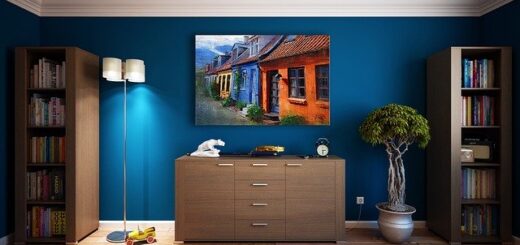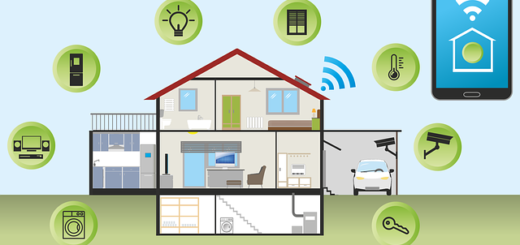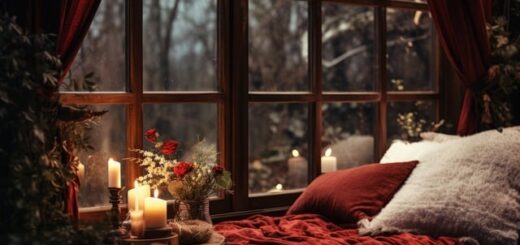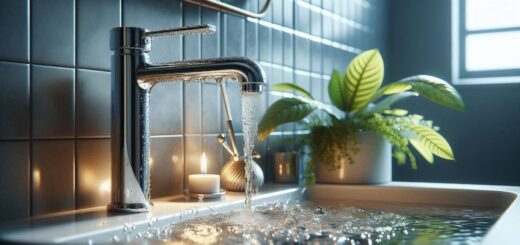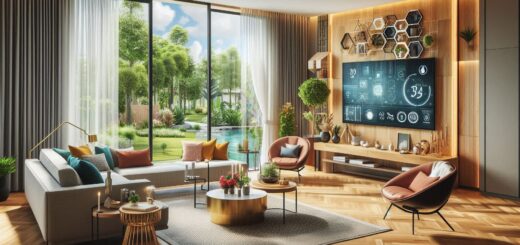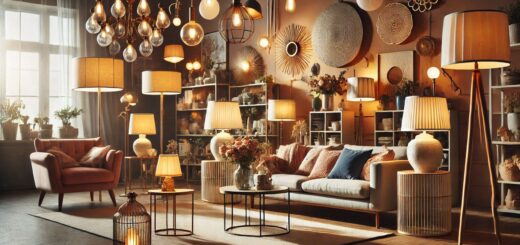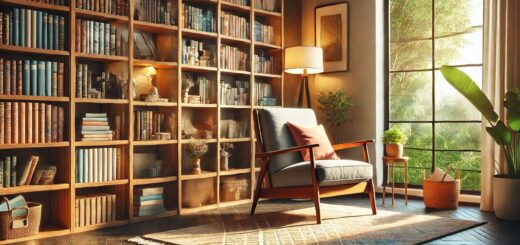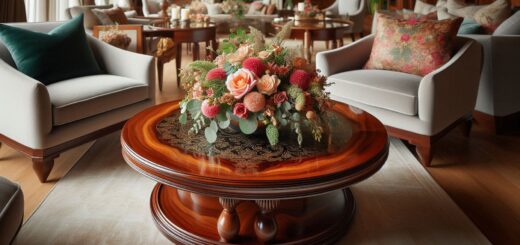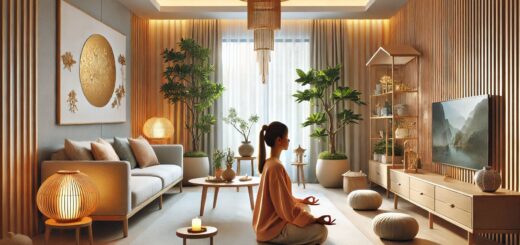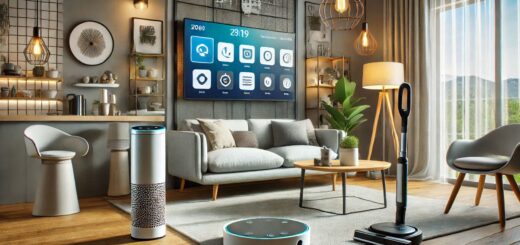Top 10 Ways to Create a Stylish Home Library or Reading Nook
A home library or reading nook is a sanctuary for book lovers, where comfort meets creativity. Whether you’re working with a small corner or a spacious room, designing this haven doesn’t have to be complicated. Let’s explore ten actionable ways to build your stylish home library or reading nook that balances aesthetics, functionality, and personal charm.
Table of Contents
The Importance of a Home Library or Reading Nook
Why Create a Reading Nook?
Having a space dedicated to reading does more than just give you somewhere to sit with a book; it nurtures a habit. When you have a nook or library in your home, it’s like inviting peace into your life. The act of stepping into a designated spot for reading sets the mood. It’s a retreat that offers a break from life’s constant noise. Whether it’s a quiet corner, a cozy chair, or a full bookshelf, it’s the little sanctuary that makes reading feel like a reward rather than a task.
Benefits of Having a Dedicated Space for Books
A home library does more than just house books. It boosts mental well-being by giving you a peaceful spot to unwind, escape into another world, or reflect. It’s a place where your thoughts can breathe. Keeping books organized in one place helps you track what you’ve read and easily find the next book to dive into. There’s something special about having your own collection at hand, creating a connection between you and the stories that live there. Plus, it can reflect your personality—a little corner that speaks volumes about who you are. Whether it’s the books you own or the way you’ve decorated it, your reading nook can tell your own story.
Additional Benefits:
- Increases focus: A dedicated reading area helps you zone out distractions and get into a deep, focused state.
- Encourages reading habits: Having a comfortable spot nearby makes it easier to pick up a book, making reading a regular part of your routine.
- Fosters creativity: The quiet atmosphere in a reading nook can spark new ideas and inspirations for projects or writing.
- Enhances relaxation: A cozy corner can be a refuge where you can unwind, helping to relieve stress after a long day.
- Promotes learning: A library at home encourages self-study and keeps your mind active with easy access to a variety of topics.
- Improves mood: Having a space for personal enjoyment, like reading, contributes to a positive and peaceful home environment.
.
Top 10 Tips for Designing a Stylish Home Library or Reading Nook
Creating a stylish and functional home library or reading nook can transform any space. With the right furniture, lighting, and décor, you can design a cozy retreat that encourages reading while reflecting your personal style. Here are 10 tips to help you build the perfect space.
1. Choosing the Perfect Spot for Your Home Library
Choosing the perfect spot for your home library is crucial. Quiet corners offer solitude, while central spaces invite interaction. Make sure to consider natural light for a cozy ambiance and think creatively about smaller spaces. Whether private or shared, your chosen spot sets the tone for your reading experience.
Quiet Corners vs. Central Spaces
When choosing a spot for your home library or reading nook, think about the kind of experience you want. Quiet corners are perfect for those who seek solitude and peace while reading. These tucked-away spaces provide a sense of escape, ideal for uninterrupted time with a book. On the other hand, central spaces can become a focal point in your home. They invite interaction, making your library an accessible gathering spot for family and friends. Whether you prefer a private retreat or a shared space, think about the vibe you want to create.
Natural Light and Its Role
Natural light plays a huge role in how comfortable your reading spot feels. Not only does it reduce eye strain, but it also creates a welcoming and cozy atmosphere. If you can, place your reading area near a window to let in the sunlight, allowing the natural glow to brighten up your space. Just be sure to have some curtains or blinds nearby to control the light, especially during the day, when the glare might make reading harder. A good balance of light makes the room feel airy and fresh.
Even small spaces can house a stylish reading nook. Consider using underused corners, alcoves, or even stairwells to fit compact shelves and seating. These areas often go unnoticed but can be the perfect place for a cozy retreat. By being creative with how you arrange furniture, you can create a home library in almost any nook.
2. Selecting the Right Furniture for a Stylish Home Library
Selecting the right furniture for your home library is all about comfort and style. Choose ergonomic chairs or cozy recliners for long reading sessions. Opt for functional, aesthetically pleasing shelving, like modular or floating shelves. Consider multipurpose pieces, like storage ottomans or foldable tables, to maximize space and functionality.
Comfortable Seating Options
When creating your reading nook or home library, comfort should be a top priority. Long reading sessions require seating that supports your body in the best way possible. Ergonomic chairs, with proper back support, are a solid choice for those who want a more upright posture. For a cozier vibe, opt for recliners or plush window seats that allow you to sink in and get lost in a good book. Think about a seat that feels like a welcoming embrace, one that invites you to stay for hours without discomfort.
Functional and Aesthetic Shelving
The shelves in your home library do more than just hold books—they set the tone for the room. Modular shelving offers flexibility, allowing you to adjust the layout as needed. It’s practical but also gives you room to express your style. Floating shelves give a sleek, modern look, making the space feel more open. If you want a more classic touch, wooden bookcases add warmth and charm. Either way, your shelves should reflect both your practical needs and personal taste.
Adding Multipurpose Furniture
Maximizing space is key, especially in smaller areas. Multipurpose furniture, like ottomans with hidden storage or foldable tables, can help keep things organized while adding flexibility to your space. These pieces can be both functional and stylish, perfect for making the most of your reading nook without sacrificing comfort or style.
3. Lighting for Ambiance and Functionality in Home Library
Lighting is key to setting the right mood in your home library. Use chandeliers or pendant lights for brightness, adjustable lamps for focused reading, and accent lights like fairy lights for a cozy atmosphere.
Overhead Lighting Options
When setting up lighting for your home library, think about balance. Chandeliers and pendant lights provide plenty of brightness, and they can add a touch of elegance. They not only light up the space but also serve as decorative pieces that elevate the room’s style.
Task Lighting for Reading
Good task lighting is crucial for reading. Adjustable desk lamps or wall-mounted reading lights are perfect for focused illumination. These lights let you direct the beam exactly where you need it, reducing eye strain and creating a comfortable reading environment.
The Warm Glow of Accent Lighting
Accent lighting helps create a cozy, inviting atmosphere. Soft options like fairy lights, LED strips, or bookcase backlighting add a warm glow to the room. These lights provide subtle brightness without overpowering the space, making it perfect for evenings when you just want to curl up with a book and relax.
4. Organizing Your Book Collection
Organizing your book collection adds both style and function. Sort books by genre, color, or author for a cohesive display. Mix vertical and horizontal stacks, and add decorative items for a personalized touch.
Categorizing Books for Easy Access
Organizing your books not only makes them easy to find but can also add a touch of personality to your space. You can sort them by genre, color, or author to create a cohesive look that suits your style. A well-organized shelf can be both functional and visually appealing.
Creative Ways to Display Books
Your book collection doesn’t have to sit on shelves in the same old way. Try alternating vertical and horizontal stacks to break up the monotony. Using decorative bookends can also add a unique touch and give your shelves more character. This creative arrangement adds interest to your library.
Incorporating Decorative Elements with Books
Bookshelves don’t have to be just for books. Mix in sculptures, framed artwork, or even candles to enhance the aesthetic. By adding these decorative pieces, you make the shelf feel more like a curated collection, blending your love for books with your personal style.
5. Incorporating Personal Touches for a Stylish Home Library
Incorporating personal touches makes your library feel like home. Dedicate shelves to favorite authors or genres, add family photos, and display sentimental items like vintage clocks or globes to enhance the space.
Showcasing Your Favorite Authors and Genres
A home library should reflect who you are and what you love. One way to do this is by dedicating sections to your favorite authors or genres. Whether it’s a shelf for mystery novels, a section for biographies, or a spot just for classic literature, organizing your collection this way adds a personal flair. It’s not just about the books; it’s about celebrating what resonates with you, creating a space that feels uniquely yours.
Adding Family Photos and Memorabilia
Personal touches can also include sentimental items that remind you of important moments or people in your life. Framed family photos or cherished mementos like awards, travel souvenirs, or old postcards can add warmth and history to your library. These items give your space more character, transforming it from just a place for reading into a reflection of your personal journey and memories.
Using Vintage or Sentimental Items
Vintage pieces like old clocks, globes, or typewriters can bring a touch of nostalgia to your reading nook. These items not only have practical uses but also add character and charm, making your library feel like a space full of stories waiting to be discovered. By incorporating such items, you blend the past and present, making your library a richer, more meaningful space.
6. Using Colors and Themes to Set the Mood in the Home Library
Colors and themes set the mood in your library. Choose calming neutrals for a serene space or energizing hues for vibrancy. Pick a theme, like minimalist or rustic, and match decor to your style.
Color has a powerful way of influencing the atmosphere. Neutral tones like beige, gray, or soft pastels create a calm, peaceful vibe—perfect for a quiet reading retreat. If you prefer a more energetic space, vibrant hues like deep blues, rich greens, or warm yellows can infuse life into the room. Pick a color palette that resonates with your personal style and the mood you want to create.
Thematic Libraries: From Minimalist to Eclectic
A theme can tie the whole space together, giving your home library a distinct personality. If you prefer clean lines and simplicity, a minimalist approach may work best, with sleek furniture and uncluttered shelves. For a cozy, warm vibe, a rustic theme with wooden bookshelves and earthy tones might be the way to go. Alternatively, if you’re someone who enjoys mixing things up, an eclectic style with a mix of modern and vintage elements can make the space feel exciting and dynamic. Choose a theme that speaks to you and makes the space comfortable.
Matching Decor to Your Personal Style
Your furniture, art, and accessories should complement each other for a cohesive look. Whether you go for a more contemporary or traditional feel, making sure your decor matches your style helps the room feel put together. Consider your taste in art, colors, and materials when selecting furniture and accessories to create harmony throughout the space.
7. Adding Comfort and Texture for a Stylish Home Library
Adding comfort and texture can make your library feel inviting. Use soft rugs to warm the space, drape cozy throws and cushions over seating, and incorporate natural materials like wood and leather for warmth.
Rugs and Carpets for a Cozy Vibe
Adding rugs or carpets to your home library is an easy way to create a warm and inviting atmosphere. Layering soft, plush rugs helps define the reading area and adds comfort underfoot. The right rug can also bring color and texture to the space, making it feel cozier.
Cushions, Throws, and Blankets
Comfort is key in a reading nook. Drape luxurious throws and blankets over chairs or couches, adding both style and warmth. Cushions provide extra comfort, giving you the perfect spot to relax for hours. A few well-placed soft fabrics can turn an ordinary chair into a cozy retreat.
Incorporating Natural Materials
To enhance the sense of warmth and authenticity in your library, consider incorporating natural materials like wood, rattan, or leather. Wooden bookshelves and rattan baskets can create a rustic yet sophisticated feel. Leather chairs or accents add a touch of timeless elegance. These materials not only look beautiful but also contribute to the comfort and overall ambiance of your space.
8. Introducing Technology Smartly in Home Library
Introduce technology in your library for added convenience. Keep e-readers or tablets handy, use smart lighting for ambiance, play calming music or audiobooks, and hide charging stations to maintain a clutter-free space.
Integrating E-Readers and Digital Displays
While traditional books hold a special place, integrating modern reading options like e-readers or digital displays can elevate your library. Keep a Kindle or tablet handy for those moments when you want a broader selection without taking up more space. Digital devices offer convenience, especially if you’re traveling or reading on-the-go. Having both physical books and digital reading options allows you to enjoy the best of both worlds, blending the tactile feel of paper with the versatility of technology.
Smart Lighting and Sound Systems
Technology can also enhance the ambiance in your home library. Smart lighting allows you to adjust brightness with ease, helping you create the perfect environment for reading. Automated systems can change the light intensity depending on the time of day or the task at hand. Pair your lighting with a sound system that plays calming music or audiobooks, making your reading space even more immersive. With voice-activated assistants, you can adjust everything from lighting to music without lifting a finger, creating a truly hands-free experience.
Hidden Charging Stations
A modern home library requires charging solutions, but you don’t want cords cluttering the space. Hidden charging stations can keep your devices powered without disrupting the aesthetic of your library. Look for furniture that includes built-in charging ports, or use clever cord management systems to keep everything neat and organized. With these small tech upgrades, your library will stay functional, stylish, and clutter-free.
9. Maximizing Vertical Space in Home Library
Maximize vertical space with floor-to-ceiling shelving to store more books and create an impressive display. Use sliding or foldable ladders for easy access, and incorporate art alongside books for a gallery feel.
Floor-to-Ceiling Shelving
When working with limited floor space, using vertical space is a game changer. Floor-to-ceiling shelving creates an impressive display and maximizes storage. Tall shelves allow you to store more books while adding an architectural element to the room. This setup can turn even a small space into a library.
Using Ladders for Accessibility
To make the most of tall shelves, sliding or foldable ladders are a practical and stylish solution. These ladders allow easy access to books on the highest shelves, blending functionality with a classic look. They add a touch of old-world charm while making it easy to reach everything without compromising space.
Displaying Art with Books
Don’t be afraid to combine art with your bookshelves. Mixing framed artwork with your book collection creates a gallery-like feel, turning your library into a visual experience. Artwork adds personality and interest, while books anchor the space. By balancing the two, you create a dynamic environment where both reading and aesthetics coexist beautifully.
10. Creating a Multi-Purpose Reading Space
Create a multi-purpose reading space by combining a desk with comfortable seating for work and relaxation. Integrate hobby zones for writing or painting, and add extra seating for guests or shared use.
Combining Work and Relaxation
Your reading space can serve more than one function. By pairing a desk with comfortable seating, you can easily transition from work to relaxation. A well-placed desk lets you read, write, or even work on personal projects. When not in use, the seating area provides a perfect nook for reading or unwinding. This dual-purpose setup makes the space adaptable, giving you the flexibility to use it for both productivity and leisure without sacrificing comfort.
Integrating Hobby Zones (e.g., Writing, Painting)
A multi-purpose space can also accommodate creative hobbies. If you enjoy writing, painting, or any other creative activity, consider designing a layout that supports those passions. Modular furniture works well in this case, as it allows you to change the arrangement based on your needs. For example, a fold-out desk or a portable easel can be tucked away when not in use, keeping the space organized. Incorporating dedicated hobby zones within your reading area enriches the experience, turning your library into a creative sanctuary where inspiration can flow freely.
Designing for Guests or Shared Use
If you often host friends or family, designing your reading space for shared use is essential. Add extra chairs or a sofa to make the room more inviting and communal. By including seating options for guests, you encourage social interaction, turning your library into a welcoming space for both solo time and group gatherings. With a balance of personal and shared elements, the room becomes a versatile space for reading, work, hobbies, and spending time with loved ones.
Incorporating Greenery and Natural Elements in Your Home Library
Adding a touch of nature to your home library can completely transform the space, making it more vibrant, calming, and inviting. Plants and natural elements bring life, freshness, and a sense of harmony that complements any reading nook or library setup.
Adding Potted Plants and Indoor Trees
One of the easiest ways to introduce greenery is by adding potted plants or small indoor trees. Larger plants like fiddle-leaf figs or rubber trees make bold statements and can act as focal points in your library. Smaller plants, like ferns or peace lilies, can be placed on shelves or side tables to add subtle touches of nature. The presence of plants not only enhances the aesthetic but also improves air quality, creating a healthier environment for reading and relaxation.
Choosing Low-Maintenance Greenery
For those without a green thumb, low-maintenance plants like succulents, snake plants, or pothos are excellent choices. These plants are resilient, require minimal care, and thrive in various lighting conditions. They’re perfect for busy individuals who want the beauty of nature without the hassle of constant upkeep.
Incorporating Natural Light to Highlight Greenery
Position your plants near windows or areas with ample natural light to make the most of their visual impact. Sunlight enhances the color and texture of greenery, creating a fresh, dynamic look. For spaces with limited natural light, consider investing in grow lights to keep your plants healthy and vibrant.
By incorporating greenery and natural elements, your home library becomes more than just a place for books—it transforms into a serene sanctuary where you can reconnect with nature while enjoying your favorite reads.
Budget-Friendly Ways to Create Your Reading Nook
Creating a cozy and stylish reading nook doesn’t have to break the bank. With a little creativity and resourcefulness, you can design a charming space that reflects your personality and fits your budget.
DIY Shelving Ideas
Building your own shelves is an excellent way to save money while adding a personal touch to your nook. Use reclaimed wood or pipes to create unique, rustic shelving that doubles as a design feature. Floating shelves are another budget-friendly option that’s easy to install and perfect for small spaces. With a bit of effort, DIY shelving can add character to your nook and keep your books organized.
Repurposing Furniture
Don’t let old furniture go to waste. Repurpose items like cabinets, dressers, or even ladders into functional book storage. A vintage cabinet can become a quirky bookshelf, or a ladder can be transformed into a creative vertical storage solution. By giving old furniture new life, you not only save money but also create something truly one-of-a-kind.
Thrift Finds and Upcycling
Second-hand shops and thrift stores are treasure troves for budget-friendly finds. Look for pre-loved chairs, tables, or decor items that can be upcycled to suit your space. A fresh coat of paint or new upholstery can turn a thrifted piece into a standout addition to your reading nook.
By combining DIY projects, repurposing, and thrift finds, you can create a stylish and functional reading nook that feels unique and personal—all while staying within your budget.
FAQs: Stylish Home Library or Reading Nook
How much space do I need for a home library?
The space needed for a home library depends on your collection size and preferences. Even a small corner can work if optimized well. A few shelves, a cozy chair, and good lighting can transform a compact area into a functional library. For larger collections, consider a dedicated room or wall with floor-to-ceiling shelving. Maximize vertical space and incorporate multifunctional furniture, like ottomans with storage, to keep the area organized. You don’t need an entire room—a thoughtful layout in an underutilized corner, alcove, or even a hallway can create a beautiful, functional home library that fits your space and style.
What’s the best lighting for reading nooks?
The best lighting for reading nooks combines natural light with focused task lighting. Position your nook near a window to reduce eye strain, and use adjustable desk lamps or wall-mounted lights for evening reading. Warm, soft lighting creates a cozy atmosphere, while dimmable options let you customize the brightness.
Can I create a reading space in a shared room?
Yes, you can create a reading space in a shared room by defining a small, dedicated area. Use a cozy chair or beanbag with a side table and task lighting to establish your nook. A bookshelf or decorative divider can separate the space visually without disrupting the room’s functionality. Opt for noise-canceling headphones or soft rugs to reduce distractions. Incorporate personal touches, like cushions or throws, to make it inviting while blending it seamlessly with the room’s overall design.
How do I style my library on a budget?
Styling a library on a budget is all about creativity. Start with thrifted or DIY shelves—reclaimed wood or painted crates work beautifully. Repurpose old furniture like dressers or ladders for unique book storage. Add personality with second-hand decor items such as lamps, vases, or framed art from thrift stores. Incorporate low-cost textiles like cushions, throws, or rugs to create a cozy vibe. For greenery, opt for low-maintenance plants like pothos or succulents. Arrange books creatively, mixing vertical and horizontal stacks, and use items like bookends or candles for added charm. With small, thoughtful touches, your library can be both stylish and affordable.
What are some decor ideas for small reading spaces?
For small reading spaces, use compact furniture like a cozy chair or pouf and floating shelves for books. Add string lights or a small lamp for warmth. Incorporate a soft rug and cushions for comfort. Enhance the space with a plant, framed art, or a decorative mirror to create charm.
How do I protect books from wear and tear?
Protecting books from wear and tear involves proper storage and handling. Keep books upright on shelves with sturdy bookends to prevent bending. Avoid direct sunlight, which can fade covers and pages, and maintain a stable, dry environment to prevent moisture damage. Use archival-quality book covers or dust jackets for added protection. Handle books carefully, avoiding excessive bending of spines or dog-earing pages. Dust shelves and books regularly to keep them clean. For valuable or rare books, consider storing them in acid-free boxes. By combining good storage practices with gentle handling, you can preserve your books in excellent condition for years.

